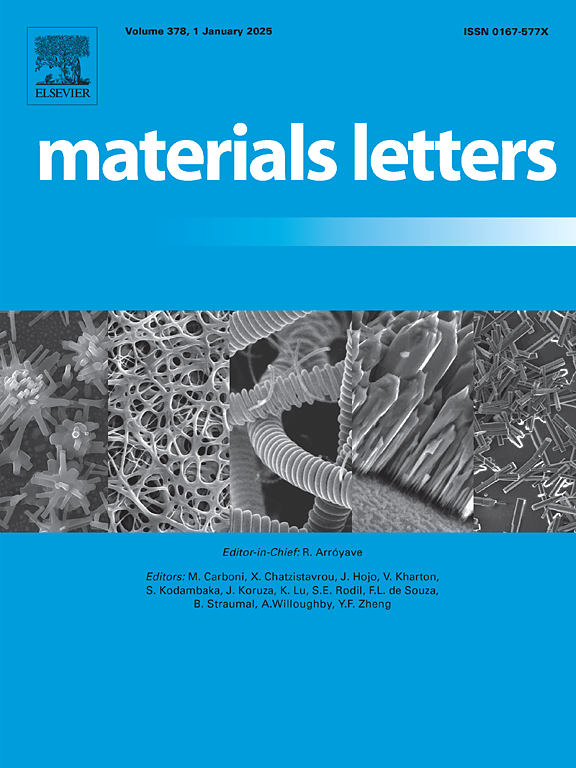Crystallographic engineering of AlN films via N2/(Ar + N2) modulation: achieving hydrogen-resistant stability in high-pressure hydrogen systems
IF 2.7
4区 材料科学
Q3 MATERIALS SCIENCE, MULTIDISCIPLINARY
引用次数: 0
Abstract
Solving the operational stability of load sensors and other devices in high-pressure hydrogen environments is one of the key factors for the development of hydrogen energy. This study fabricated Cr/AlN bilayer films on 316L stainless steel via closed-field unbalanced magnetron sputtering ion plating (CFUBMSIP), systematically investigating the influence of N2/(Ar + N2) ratios on the microstructure evolution and high-pressure hydrogen resistance of AlN layers. The analysis of the research results shows that: (1) Nitrogen proportion critically governs AlN crystallographic characteristics – amorphous structure with elevated roughness (Ra = 19.6 nm) forms at 50 % N2, while 33 % N2 induces dense (100)-oriented crystallization with peak deposition rate (6.05 nm/min) and ultra-smooth surface (Ra = 2.5 nm). Further reducing N2 to 25 % triggers (100) → (111) preferential orientation transition. (2) Under 12 MPa H2 environment, both (100)- and (111)-oriented AlN films demonstrate exceptional insulation stability (≪3% resistance fluctuation), contrasting sharply with amorphous counterparts showing severe stability degradation due to hydrogen-induced defect state proliferation. By establishing quantitative correlations between gas composition, crystalline orientation, and functional performance, this work provides fundamental insights for engineering robust AlN insulating coatings in high-pressure hydrogen energy systems.

通过N2/(Ar + N2)调制的AlN薄膜的晶体学工程:在高压氢系统中实现耐氢稳定性
解决负载传感器等设备在高压氢气环境下的运行稳定性问题是氢能发展的关键因素之一。本研究采用闭场不平衡磁控溅射离子镀(CFUBMSIP)方法在316L不锈钢表面制备了Cr/AlN双层膜,系统研究了N2/(Ar + N2)比对AlN层微观结构演变和耐高压氢性能的影响。研究结果表明:(1)氮气比例对AlN的结晶学特征起着关键的控制作用,在50% N2时形成粗糙度提高的非晶态结构(Ra = 19.6 nm),而33% N2时形成致密(100)取向结晶,峰值沉积速率为6.05 nm/min,表面超光滑(Ra = 2.5 nm)。进一步降低N2至25%触发(100)→(111)择优取向转变。(2)在12 MPa H2环境下,(100)取向和(111)取向AlN薄膜均表现出优异的绝缘稳定性(≪3%电阻波动),与非晶态AlN薄膜形成鲜明对比,后者由于氢诱导的缺陷态扩散而表现出严重的稳定性退化。通过建立气体成分、晶体取向和功能性能之间的定量相关性,这项工作为高压氢能系统中设计坚固的AlN绝缘涂层提供了基础见解。
本文章由计算机程序翻译,如有差异,请以英文原文为准。
求助全文
约1分钟内获得全文
求助全文
来源期刊

Materials Letters
工程技术-材料科学:综合
CiteScore
5.60
自引率
3.30%
发文量
1948
审稿时长
50 days
期刊介绍:
Materials Letters has an open access mirror journal Materials Letters: X, sharing the same aims and scope, editorial team, submission system and rigorous peer review.
Materials Letters is dedicated to publishing novel, cutting edge reports of broad interest to the materials community. The journal provides a forum for materials scientists and engineers, physicists, and chemists to rapidly communicate on the most important topics in the field of materials.
Contributions include, but are not limited to, a variety of topics such as:
• Materials - Metals and alloys, amorphous solids, ceramics, composites, polymers, semiconductors
• Applications - Structural, opto-electronic, magnetic, medical, MEMS, sensors, smart
• Characterization - Analytical, microscopy, scanning probes, nanoscopic, optical, electrical, magnetic, acoustic, spectroscopic, diffraction
• Novel Materials - Micro and nanostructures (nanowires, nanotubes, nanoparticles), nanocomposites, thin films, superlattices, quantum dots.
• Processing - Crystal growth, thin film processing, sol-gel processing, mechanical processing, assembly, nanocrystalline processing.
• Properties - Mechanical, magnetic, optical, electrical, ferroelectric, thermal, interfacial, transport, thermodynamic
• Synthesis - Quenching, solid state, solidification, solution synthesis, vapor deposition, high pressure, explosive
 求助内容:
求助内容: 应助结果提醒方式:
应助结果提醒方式:


